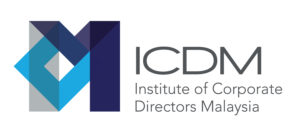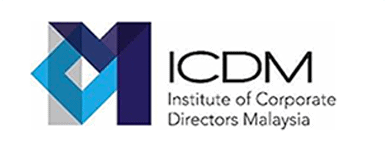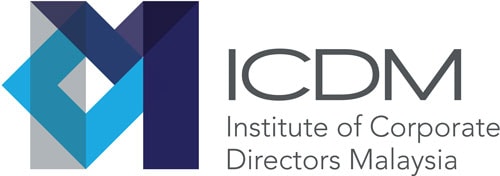Learn how to identify, recruit, and develop the talent skills your organisation needs now and in the future.
Build a Future-Ready Workforce With the Skills You Need
By 2027, it’s estimated that half of all roles will be affected by a skills gap, creating a problem for many organisations.
Businesses’ desire to capitalise on advances in AI and automation are a key driver of the skills gap, but it’s not just tech. An aging workforce in some areas, such as engineering, means that much of the talent will soon retire, and not enough people have been entering the field.
And in pharmaceuticals and healthcare, major recent advances in treatments, research and development (R&D), and diagnostic tools require extensive training. So, while demand is there from clients, not enough people are capable yet of taking on the work.
To remain competitive today and in the near future, organisations need a plan to address their skill gaps.
Identifying the Workforce Skills Your Organisation Needs for the Future
Businesses need to rethink how they structure roles, hire new talent, and develop their teams, pivoting to become more of a skills-based organisation. The goal is to build a workforce that is agile enough to adapt to future needs.
Aligning long-term goals with talent initiatives ensures that every aspect of your workforce strategy contributes to business success, bridging the skills gaps and preparing for future opportunities.
But how can you understand the skills your company currently has and identify the future skills it will need?
Start by defining your business objectives. Ask yourself these key questions:
- As a business, where are we now?
- Where do we want to be?
- What skills will we need to achieve our business plans?
- What skills do we currently have?
- Which ones are we lacking?
Once you know what’s lacking, decide if your current workforce can evolve to fill these skill gaps or if you need to hire new talent with the required skills and competencies.
“I advise my clients to create a skills philosophy for their organisation that includes a dedicated strategy of upskilling and reskilling people for the future workforce,” says Ashish Sinha, a Senior Client Partner at Korn Ferry.
“The clients I work with are shifting not just talent acquisition, but their whole approach to talent management through a skills-based lens.”
Recruiting for Skills Over Experience
Prioritising skills over experience allows you to tap into a broader talent pool. Highlighted as a talent acquisition (TA) trend by Korn Ferry for 2024, a skills-based hiring approach means you won’t be missing out on talented people from non-traditional backgrounds, fostering a more inclusive, diverse, and innovative workforce.
“The clients I work with are shifting not just talent acquisition, but their whole approach to talent management through a skills-based lens,” says Korn Ferry Senior Client Partner, Tracy Bosch.
Here are three ways to help you recruit for skills over experience:
Redefine Job Postings to Highlight Workforce Skills
Instead of focusing on previous job titles and roles, emphasise the required skills in job descriptions to attract a broader, more diverse pool of candidates.
Communicate a Skills- based Approach in Your EVP
Clearly state your organisation’s emphasis on skills in your Employee Value Proposition (EVP) to draw candidates who align with your values.
Use AI Tools with ATS for Skills-based Hiring
Get the most out of your Applicant Tracking Systems (ATS) by integrating it with AI tools that allow you to automate processes. For example, leverage the AI capabilities to efficiently review thousands of resumes, ensuring you find the best skills-based matches quickly and efficiently.
To ensure skills-based hiring is effective, you should also integrate skills-focused practices into your broader talent strategy, including rewards, performance management, and learning and development (L&D).
How to Keep Talent Who Have the Skills You Need
Holding on to talent who have the right skills is obviously crucial. They will give you a leg up, helping you start with a knowledge base that will keep your company going in the right direction, while also providing support when you’re trying to upskill and reskill other people.
Here are three strategies to help you retain your best people:
Be Flexible
Korn Ferry’s Workforce 2024 report found that 75% of employees say the ability to work flexibly and from wherever they want is critical to work-life balance. Offering flexible work arrangements and promoting work-life balance are crucial for an engaging environment to nurture and retain your standout talent.
Provide Purpose and Growth
Aligning individual goals with organisational objectives keeps employees motivated. “A purpose-driven environment with opportunities for growth boosts employee retention,” says Rupali Gupta, a Senior Client Partner at Korn Ferry. Offering learning and development opportunities helps employees feel they can achieve their career goals within the company.
Promote Internal Mobility to Enhance Skill Development
Allow employees to explore different roles and functions to enhance their skills and career prospects. This keeps them challenged and engaged, fostering a dynamic and motivated workforce. Our data shows that investing in development opportunities and internal mobility can significantly improve retention.
When people feel valued and included for their unique perspectives and contributions, they are more likely to stay. Implementing strategies like inclusive hiring processes, training programs, and mentoring can improve retention and build a resilient workforce.
Upskilling and Reskilling Your Workforce for the Future
To stay competitive, investing in upskilling and reskilling your workforce is essential. Not only does this keep your team relevant, but providing your people with skill development opportunities also enhances employee engagement and loyalty.
Two-thirds of people would stay in a job that offers opportunities to progress and learn new skills, even if they don’t love their current role, according to Korn Ferry’s Workforce 2024 report.
Focusing on skills closely related to core competencies, known as skills adjacency, helps employees smoothly transition into new roles too. “By nurturing adjacent skills, employees can transition seamlessly, keeping the organisation dynamic and resilient,” explains Sinha.
Creating a culture of continuous learning is key to upskilling and reskilling the workforce. This involves regularly investing in the training, growth, and development of employees. Leaders should support these initiatives with structured learning programs, aligning coaching efforts across the entire organisation to support learning at scale.
Here are three practices to help foster an upskilling and reskilling culture within your organisation:
Embrace Learning Agility to Enhance Workforce Skills
Encourage employees to be open to new experiences and continuously seek knowledge. Learning agility helps them adapt to change, acquire new skills, and apply them in various contexts. This is essential for staying relevant and valuable in a fast-changing business environment.
Invest in Early Workforce Development
Focus on employee development early in their careers to build a resilient workforce. Identify high-potential employees and prepare them for leadership roles. Korn Ferry’s Global Lead for Life Sciences, Naomi Sutherland, notes: “Early development provides growth opportunities, building a resilient and adaptable workforce.” This creates a strong talent pipeline for the future.
Gain Leadership Support for Skills Development
Leadership must understand the importance of future skills and commit to development initiatives. This requires prioritising long-term employee growth over short-term gains. By championing skills development, leaders foster a culture that values continuous learning and innovation, which is crucial for sustainable success.
By implementing these strategies, organisations can ensure their workforce is prepared for the challenges of tomorrow while fostering a culture of growth and development today.
Create a Holistic Talent Strategy That Aligns with Your Skills-Based Goals
As organisations embrace a skills-first approach, a holistic talent strategy that integrates business goals, workforce planning, and employee development will be key to helping you hire and develop the people you need to grow. A mature talent acquisition function can support you with this, whether it’s Recruitment Process Outsourcing (RPO), a search partner or bringing your TA function in-house.
Wondering where your TA function should fit within your organisation? Download this guide to find out more.
The article was first published by Korn Ferry.
Photo by Annie Spratt on Unsplash.

 5.0
5.0 
















